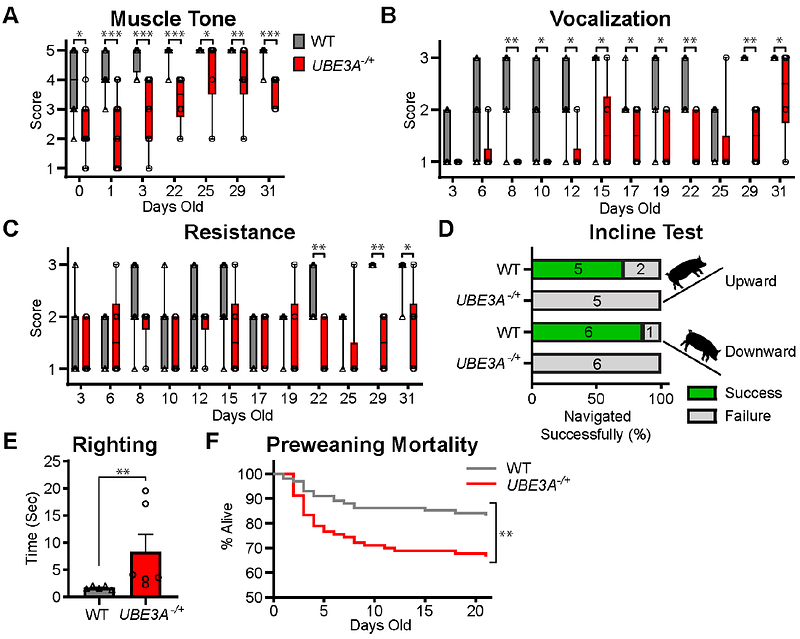A preclinical pig model of Angelman syndrome mirrors the early developmental trajectory of the human condition

A preclinical pig model of Angelman syndrome mirrors the early developmental trajectory of the human condition
Myers, L. S.; Christian, S. G.; Simpson, S.; Sper, R.; Taylor, C.; Montes, L.; Jepp, T. B. C.; Ramos, D.; Schuller, L.; Konganti, K.; Friedeck, W.; Habib, O.; Hodge, M.; Taylor, A. J.; Coffell, A.; Schlafer, A.; Matt, M.; Revell, B.; Knight, C.; Barrena, C. C.; FAST Integrative Research Environment (FIRE) Initiative, ; Murphy, W. J.; Piedrahita, J.; Dindot, S. V.
AbstractAngelman syndrome is a neurodevelopmental disorder characterized by severe motor and cognitive deficits. It is caused by the loss of the maternally inherited allele of the imprinted ubiquitin-protein ligase E3A (UBE3A) gene. Rodent models of Angelman syndrome do not fully recapitulate all the symptoms associated with the condition and are limited as a preclinical model for therapeutic development. Here, we show that pigs (Sus scrofa) with a maternally inherited deletion of UBE3A (UBE3A-/+) have altered postnatal behaviors, impaired vocalizations, reduced brain growth, motor incoordination, and ataxia. Neonatal UBE3A-/+ pigs exhibited several symptoms observed in infants with Angelman syndrome, including hypotonia, suckling deficits, and failure to thrive. Collectively, these findings are consistent with the pathophysiology and developmental trajectory observed in individuals with Angelman syndrome. We anticipate that this pig model will advance our understanding of the pathophysiology of Angelman syndrome and be used as a preclinical large animal model for therapeutic development.